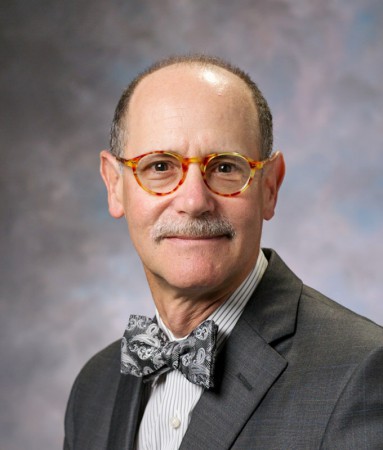Professor J. Philip Saul is a paediatric cardiologist from the Medical University in South Carolina. During his visit to the Second Faculty of Medicine and to the Czech Republic we interviewed him about what he does and what he has achieved.

who specializes in electrophysiology, and served as the program director
for The Children's Heart Program of South Carolina from 1997–2013,
after which he served as Chair of the Department of Pediatrics
at Ohio State University and Nationwide Children’s Hospital.
As the role of genomics has emerged in every field over the last decade,
but particularly in inherited arrhythmias, Professor Saul has been
impressed with the relevance of the field for the future
of arrhythmia management in the young.
Photograph: archive of J. Philip Saul
What is your current area of interest in medicine and what projects are you working on?
In March of 1990 I performed the first radiofrequency catheter ablation in a child to cure a 5 year old child with the Wolff-Parkinson-White syndrome, a common cause of abnormal rapid heart rhythms in children. That event heralded a 20 year focus on the broad treatment of tachyarrhythmias in children and adults with catheter based therapies that continues today. Without diminishing the importance of this area, coincident with the growth of catheter ablation, our understanding of the genetic basis of arrhythmias has grown exponentially, along with our ability to identify many genetic causes and influences through enhancements in gene sequencing technologies. I have been intrigued by the opportunities in genomics, which has had a large influence on the direction of my career over the last decade.
What are your last discoveries and successes?
My successes have mostly been around catheter ablation, having performed the first one in a child for WPW and the first cryoablation in the United States in a child in 2002. More recently my efforts have been focused on multicenter clinical trials for patients with congenital heart disease, with and without arrhythmias. These studies have ranged from evaluation of intravenous amiodarone in children to long term follow-up studies of patients with a Fontan procedure. I have not been directly involved in the discovery side of genomics, but use it in my clinical work in patients with familial arrhythmia syndromes.
Who in the world do you cooperate with?
My long term cooperation has been with pediatric arrhythmia specialist, often through PACES, the Pediatric and Congenital Electrophysiology Society. Two of my close peers in Europe are Dr. Thomas Paul from Goettingen, DRG and Dr. Jan Janousek from here at Motol. From 2001 through 2014 I was one of the Clinical Center Principle Investigators for the Pediatric Heart Research Network (PHN) of the National Institutes of Health.
Is paediatric cardiology popular among medical students?
It seems to be these days in the United States. The number of applicants for Fellowship training in pediatrics is second only to Neonatology.
Has the rate of cardiac diseases in children been increasing in last decades? What are the trends?
Because the cardiac effects of obesity, which has become so common now, are not seen until later in life, the rates of heart disease in children, which is primarily congenital have actually been quite steady over the years. The one exception is that pre-natal diagnosis has lead to some parents choosing termination of foetuses with particularly severe defects; however, the effect of that vary significantly by country, depending on cultural and religious issues.
What are recent developments in sudden cardiac death in children?
By far the most important new aspect is related to the fact that most sudden cardiac death in children is related to a genetic arrhythmia syndrome. The ability to identify the genetic defect in the proband patient has not only influenced the care of that patient, but has a strong cascade effect in diagnosing other family members and even foetuses or neonates, providing the ability to prevent various malignant sequelae, including death.
What are your aims and plans for the future?
After 16 years as Director of The Children’s Heart Program of South Carolina, I spent a year as Chair of Pediatrics at Ohio State University and Nationwide Children’s Hospital. However, now I am looking for a new opportunity and enjoying some free time, including this visit to Prague, accompanied by my wife. Perhaps I could be useful here!
Do you use any knowledge you get during the research to improve your healthy lifestyle?
Just as lifestyle has had minimal effect on pediatric heart disease rates, the specific research I have done has not had a big impact on my health as an adult. The one exception is that I often find that patients sometimes continue to have symptoms like chest pain and palpitations, after they have been informed the problem is not from their heart. These patients often benefit from ‘mindfulness’ type therapy. So I find myself referring patients to biofeedback, or ‘prescribing’ activities to learn how to invoke the relaxation response, activating the vagus nerve. I learned this from my early and extensive research in the field of autonomic physiology and heart rate variability, and often practice these activities myself – physician heal thyself!
Questions by Petr Andreas, revised by prof. Jan Janoušek